Strategies for Selecting APM Solutions
A brief history of Asset Performance Management
Asset performance management started as early as the mid-1960s with very early versions of systems known as CMMS (computerized maintenance management systems). Developers originally built these solutions to help with the complicated task of coordinating people and performing industrial equipment work. As computing technology became more prevalent within industrial organizations, ERP systems (enterprise resource planning) emerged as another category of business systems. ERP solutions focused on bringing data and work processes together across all the major functions of an organization, such as finance, operations, and sales and provided significant productivity gains for industrial organizations. The advent of ERP systems provided the ability to manage an assets lifecycle with integrated processes to procure, maintain, and dispose of assets within one system which established the next generation of CMMS systems called EAM (enterprise asset management).
With the deployment of CMMS and EAM solutions, organizations were able to address many foundational aspects of asset management. Having a common equipment database and a systematic approach to managing work made them much more efficient. But these solutions did not address how an organization could be more effective with their resources or ensure that maintenance activities addressed a critical organizational objective, preventing unplanned equipment failures. This functional gap led to the creation of APM (asset performance management) solutions in the mid-’90s.
The state of APM solutions today
Today, industry analysts estimate the Asset Performance Management solutions market to be over $4 Billion in annual revenue with yearly double-digit growth rates. The market’s size and projected growth rate directly reflect an APM solution’s impact on key business objectives such as increased equipment availability, optimization of maintenance spend and lowering risk to people and planet.
Currently, many organizations have the fundamentals in place in the overall context of asset performance management. For example, many catalog asset plans and schedule asset maintenance. In addition, many organizations have implemented some form of monitoring and inspection programs to proactively identify potential equipment problems. Over the last few years, the scope of APM solutions has grown with technology advancements such as expansion of sensing technology, management of large volumes of data, and advanced analytical modeling. As a result, the asset performance solution category has a broad functional range. Its management scope spans from classic approaches of developing asset strategies (RCM, FMEA), historical analysis of maintenance and repair history (Pareto and statistical analysis) to advanced failure prediction utilizing operational data and machine learning.
A recent study by Verdantix identified 27 prominent APM solutions in the market. Given the number of providers and variations in approach, how can an organization find the one right for them with so many solutions to choose from? Utilizing a structured evaluation approach and staying focused on your requirements can ensure the selection of the most ideal APM vendor for your specific objectives.
To help with this process, here are five practical elements to consider as you evaluate APM solutions.
Clearly define your business objectives
Asset Performance Management programs have the ability to drive variable business outcomes which are often determined by factors such as what industry you are in, the current business climate, and the size and maturity of your asset management team.
Typical business objectives consist of:
- Enhanced availability or production throughput
- Lower operating costs
- Lower risk to the people and environment that co-exists with industrial assets
- Increased productivity & collaboration between maintenance, reliability, and engineering resources
In some cases, organizations may be looking for improvements across all the objectives mentioned, but it is also common for an organization to be targeting just a specific improvement area. The classic example here is an industrial company working in a down-demand cycle that may have no problem meeting production targets at a lower equipment availability. Their primary objective could be lower operating costs. Supporting this goal means reducing costs in areas like maintenance instead of enhancing production throughput. Starting with a simple understanding of the core business objective is a great way to define your endpoint. Then you can establish the core APM use cases and requirements.
Key Takeaway: Before jumping into APM vendor evaluation, take some time to:
- Establish the core business objectives for your program,
- Map them to your corporate improvement initiatives,
- Create simple but measurable metrics and goals that allow you to track your program ROI.
Align your APM use cases to your business objectives
With the varied functional capabilities of APM solutions and different techniques to improve the performance of industrial assets, a key step in the process is to determine which APM use cases are the best fit for your core business objectives. Ideally, you want to leverage these use cases against what capabilities your organizations can successfully “absorb.” Today’s market offers many large, monolithic APM solutions which attempt to offer and sell you a plethora of APM features which may be beyond your needs. Historically, these solutions were designed to support the largest and best-funded APM transformations, so they may not align with your business objectives, requirements, or budget.
A few of the common APM use cases for consideration include:
- Optimization of maintenance/asset strategies
- Failure prediction through anomaly detection
- Equipment health monitoring
- Condition-based/predictive maintenance
- Root-cause failure analysis
This list presents a significant variation in the potential impact for an organization. One example to highlight is the amount of buzz about using Machine Learning to help identify operating anomalies before failures occur. These techniques work for highly critical equipment where maximizing availability is the primary goal. They can provide early warning of a potential failure, thereby reducing downtime. However, these approaches can be expensive to deploy, are usually specific to certain equipment and operating contexts, and are ineffective for identifying areas where the organization can materially reduce maintenance spending. Anomaly detection requires high-quality data, the ability to get at it, feedback mechanisms to train the model, and most importantly, the organization must be ready to receive, accept, and manage the identified anomaly further. Some organizations are mature enough for this level of application capability, while others may never need this sophistication to meet their business needs.
It is essential to understand your specific requirements and internally align with them before getting distracted by all the potential “shiny new objects” that APM vendors put in front of your evaluation team. Keep in mind that there is no magical solution. Microsoft’s Word product is a great example of this scenario. Are your requirements to write a short report or publish a novel? Word has thousands of features available, but most of us only need a fraction of them to meet our needs.
Key Takeaway: Avoid the temptation to just adopt a APM vendors use cases and assume they will work for you, APM is not a ‘one size fits all’ business process:
- Consider your APM use cases and ensure they align with your business objectives
- Avoid the trap purchasing massive feature sets which will never get utilized
- Do you need all of the capabilities being pitched to you?
- Is your organization mature enough to leverage all the capabilities?
- Focus on your requirements to avoid unnecessary spend on software that never gets adopted
Assess your need for a solution or platform
Companies with successful APM programs design them considering all aspects of people, processes, and technology. Today vendors offer APM solutions in one of two forms; a defined software application or a technology platform that customers can leverage to build a specific use case. Software solutions typically deploy faster and have higher user adoption rates as they provide “ready to go” use cases to solve everyday problems. Platforms provide enabling technology that requires more effort and cost to develop and integrate with your internal systems. They have the additional benefit of offering significant use case flexibility and control.
To illustrate this scenario, let’s look at the earlier use case, anomaly detection. Anomaly detection software provides analytical capabilities to detect changes in equipment operating state and a work process to manage what has been discovered. This process includes prescribing actions to mitigate risk, a method to drive these actions to completion, and an optimization step to ensure that the asset strategy is continually improved.
Conversely, some organizations choose to address anomaly detection using platform technology such as “R” or “Python.” Although this avenue offers significant capabilities and flexibility to develop models and algorithms that detect state changes or deviations in operating data, it also requires organizations to integrate those outputs with other tools and systems. Why? Because this technology lacks a mechanism that ensures the complete management of the threat and feedback to the original strategy. To complete the solution, the analytic needs to be incorporated into a broader solution or work process. A platform approach to this problem might offer flexibility, but it will require more integration and users to self-manage the process. This situation presents a challenge, especially with today’s remote and transient workforce.
Key Takeaway: Determine your need, platform or solution:
- Platforms offer flexibility to address requirements but often lack a holistic process and require dedicated technical resources to implement
- Solutions offer prescribed work processes and quicker implementation but may have limitations in customizations
- Assess the pros and cons of each approach as it relates to your organization, resource availability and use cases
Evaluate functional design, it impacts value creation
A key factor in ensuring user adoption and broad scaling of an APM program is a unified work process and user experience that fosters value creation. A common mistake in APM solution selection is not fully considering the “functional design” and assuming your team will figure it out with enough training and time. A good functional design drives a defined process which leads to value creation and has considered the system user in every step of the process. A great example of this is Apple’s iPhone which effectively eliminated the Blackberry with great functional design because it was easy to use and rapidly created value by integrating the camera and phone.
When evaluating APM solutions it is important to evaluate functional design as many have been ‘stitched together’ through acquisitions of multiple products and technologies. While these applications may provide a broad feature set that checks the functional boxes, they likely have limited integration between individual products or modules and will be difficult to upgrade or maintain. To top it all off, this lack of integration results in a jagged user experience that hinders productivity and adoption which ultimately limits value creation. To ensure you are evaluating functional design of your APM solution consider the following:
- Does the application offer a integrated work process that drives continuous improvement?
- Is the user experience intuitive and available on all devices (computers, tablets, phones, etc.)?
- Are there in application tutorials available to keep users effective after go live?
- Are there multiple products which need to be purchased or navigated to complete a process?
Key Takeaway: As you assess APM solutions, formally evaluate the functional design:
- Look for a seamless user experience across a defined and guided work process in the actual solution, get beyond the marketing view which always shows an integrated process
- Evaluate ease of use and determine if the solution has in-app tutorials so users stay effective over time
- Select the iPhone over the Blackberry to ensure adoption, scaling and ROI
Assess your pricing risk
The industrial software market has seen significant business model changes over the last ten years as the adoption of hosted or cloud-based architectures have become more prevalent. The most significant change is the movement away from the actual “purchase” of a software license to a model that looks more like a “rental” program. Here is a summary of the most common software licensing constructs available today:
- Perpetual – Perpetual software licensing is an actual purchase of the software with ownership in “perpetuity.” You purchase the software and own it forever, even if the provider goes out of business. Perpetual licensing typically presents the greatest risk to an organization purchasing software. Customers pay most fees upfront, and they are not refundable if the project is not successful or if the organization ends up not fully utilizing the solution.
- Subscription – Subscription licensing follows a rental model, where vendors license access to a software solution for a defined period (usually an annual term in enterprise software). Subscriptions offer lower up-front costs to purchasers but tend to have a higher total cost of ownership when licensed for more than four years. Another benefit of this model is the cost is usually treated as an operating expense and can be cancelled if value is not generated in the subscription term.
- Pay as you go – Licensing software in a “pay as you go model” is like subscription licensing with an additional benefit. You only pay for your actual usage. The solution automatically tracks your system usage (such as the specific number of assets your APM program manages), and you pay a predefined fee for that number of assets under care. This licensing model presents the smallest amount of risk to the APM solution buyer and places it firmly back on the solution provider, where it should be. In this model, the APM vendor and purchaser have aligned motivations to ensure program success.
The evolution from perpetual to “pay as you go ” licensing models dramatically changes who can consume APM products. It lowers up-front costs, shifts licensing risk from buyer to supplier, and provides a scalable and predictable ROI model that grows with your APM program.
Key Takeaway: Ensure software licensing structure is a core solution evaluation component:
- Determine how APM solution providers license and charge for their products
- Assess if the licensing model is forcing you to purchase a scope that is not truly align to actual usage of the system
- Are you being asked to license for a complete facility when you are only concerned about 100 assets?
- Evaluate the licensing model to determine if it drives aligned incentives for both parties
The Asset Performance Management solutions market has evolved significantly over the last 5 years with varied offerings, functional approaches, and technical architectures. When implemented correctly, an APM solution can give an organization a competitive advantage by lowering operational costs, improving asset productivity and reliability, and decreasing overall risk to people and planet. Many industrial organizations can quickly benefit from APM uses cases and this will drive further growth of the APM market. As the market continues to grow, there is a good chance that more APM providers will enter the market further complicating the selection process. The key is selecting the right solution at the right time for your organization and ideally, one that will scale and evolve with your needs.
Before jumping into vendor selection, work with your evaluation team to document your requirements and measurement criteria. Define your primary business objectives, document your use cases, and evaluate potential solutions for rapid user adoption, aligned technical architecture and pricing risk in addition to specific functional requirements. Spending just a little time up front on these basic elements will not only save your team a lot of time but help ensure you are deploying a solution which succeeds in meeting your needs and value targets.
Interested in gaining more insights into the implementation of APM solutions? Itus Digital offers one of the most experienced teams available.
Contact us to gain more insights!



